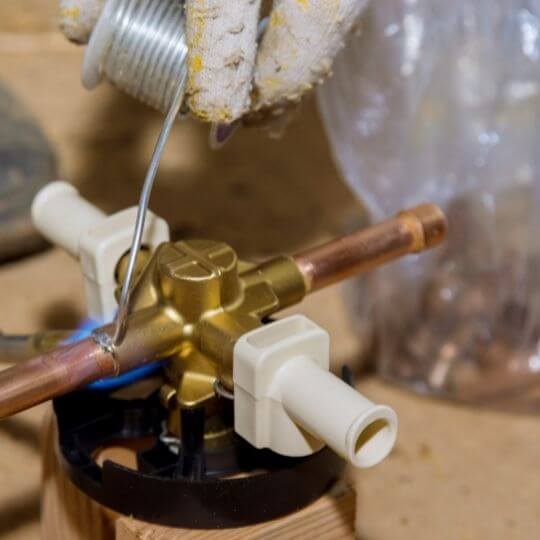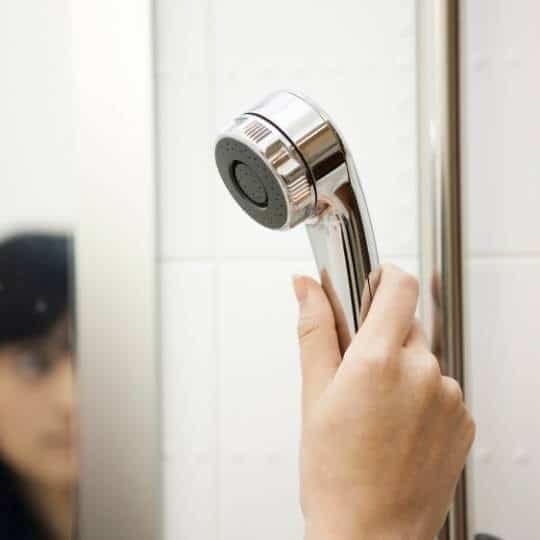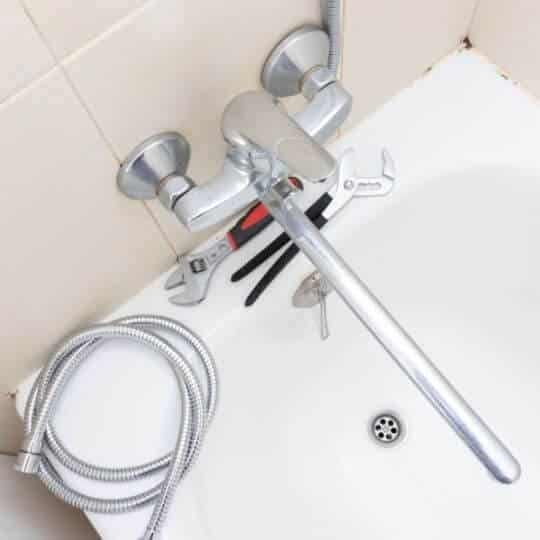Want to know how to replace a bathtub spout shower diverter?
Shower diverters are some of those useful items that make our lives easier every day. Yet, many of us don’t even know that shower part is called a diverter.
We only notice it when it breaks and no longer does its job. It’s either stuck or water runs through the bathtub faucet when you want to take a shower.
That so-called ‘switch’ that allows you to shift between bathtub faucet and shower head is not working anymore?
This means you might need to learn how to replace a bathtub spout shower diverter.
Such malfunctions are very common and can have multiple causes. The good news is you can fix them easily, even if you are not a professional plumber.
What is a bathtub spout shower diverter?
You are using a bathtub spout shower diverter every day, but you probably didn’t know its name.
A shower diverter is a mechanism that reroutes water from bathtub faucet to your showerhead. You can switch between two positions to direct water as desired.
This tiny device makes it possible to fill your bathtub or use your showerhead through the same bathroom fixture. Very useful and ingenious, isn’t it?
The shower diverter is turned on with a button or with a faucet handle. This handle is usually located between the bathtub’s hot and cold knobs.
How does a shower diverter work?
When the shower diverter is open, water flows directly through the tub faucet.
If you want to take a shower, you lift the knob or lever to close the valve. The pressure forces the water to flow upwards and out of the showerhead.
Types of bathtub spout shower diverters

There are three main types of shower diverters in use nowadays:
- Three-valve diverter
A tap or lever is located between the hot and cold taps. Turning the diverter 180 degrees activates it. You just need to turn it back when you finish showering.
- Two-valve diverter
This type of diverter can be found in two places. It can be placed in the middle of a temperature-controlling faucet. It can also be found between the taps of a two-tap faucet.
- Tee diverter
This is a single valve diverter located in the tub faucet. It is activated by pulling up on the lever in the faucet.
How do you know your shower diverter needs repair or replacing?

It is not difficult to determine when your shower diverter is broken.
The most common sign of malfunction is water continuing to leak out of the bathtub spout instead of the showerhead.
However, there is a certain amount of leaking that is normal. But how much is accepted?
Most shower diverters leak a small amount of water from the tub spout even if water is diverted to the showerhead. In the US, the plumbing standard allows a leak rate of 0.1 gallons per minute for a new shower diverter. At the end of the product’s life, the allowed leak rate is 0.2 gallons per minute. [1]
If your shower diverter causes significant leaks or won’t switch, it is high time to repair it.
What issues can you have with the shower diverter
The shower diverter is a simple and straightforward device. There are not too many issues that you can deal with:
- The seal is defective
The inner rubber stopper is not creating a good seal and is not able to redirect the flow of water.
- Accumulated dirt, grease, and limescale
This issue can be solved by using a mild acid such as vinegar.
- The gate has slipped out of position
It is possible for the gate to have slipped out of position and partially block the water pipe. As a result, water will be dripping out of the showerhead even if the diverter valve is not engaged.
Can you repair a shower diverter?
Even if repairing a shower diverter is the last thing you feel like doing, don’t postpone it. A malfunctioning shower diverter causes water waste and a poor shower experience. Follow these steps to repair your bathtub spout shower diverter:
- Turn off water supply
Every plumbing job starts with turning off the water supply. This prevents floods and water damage to your home.
- Cover your drain
Cover your drain with an object or better seal it off with tape. This is to prevent screws or other small parts from being lost down the drain.
- Tighten the screws behind the faceplate of the diverter valve
If this fix doesn’t work, you should move to the next step.
- Disassemble the shower diverter
For diverters with a rotating valve, unscrew the nut at the stem of the diverter. Remove the entire valve.
For gate-type valves, unscrew the threaded tub spout.
- Inspect the shower diverter for dirt and limescale
Grease, dirt, and minerals from water can accumulate around the shower diverter. The diverter will feel stuck or make grazing or squeaky noises when pulling it. You may also have trouble pushing it back down.
Pour some vinegar in a plastic bag and wrap it around the spout. The spout should be submerged into the vinegar. Let it sit for a couple of days.
- Apply lubricant
Is the diverter still stubborn after soaking it in vinegar? Apply cooking spray. This will work as a lubricant and the diverter will slide more easily. When the knob starts working properly, clean the excess spray from the faucet.
- Clean the shower diverter
Cleaning the inner parts of the diverter gate can solve your problem. Disassemble the shower diverter and clean its parts by soaking them in vinegar. If there is a lot of dirt, scrape it off with a paste of vinegar and baking soda.
How to replace a bathtub spout shower diverter

You cannot fix your shower diverter or you prefer a new one?
- Replacing the shower diverter
The first thing to do after disassembling is bringing your old diverter with you to the store. This way you are sure you will purchase the correct replacement.
Install the new diverter. Make sure that parts do not cross-thread each other. Tighten the diverter by using a wrench, but be careful not to overtighten it. Determine whether the diverter is in the right position or not by twisting the gate or adjusting the stopper.
Now it’s time to check the functionality of your new shower diverter. Turn the water supply on and use the diverter to direct the water flow to the showerhead. Your replacement is successful if the shower flows well and no water leaks from the bathtub spout.
- Replacing the valve gate
At times replacing the entire shower diverter may not be required. In fact, you can only replace the valve gate and have your issue resolved.
Take your shower diverter to the hardware store and ask for a gate valve that fits your shower model. Install the new valve after reading instructions carefully. This option is cheaper but more complicated and time-consuming.
- Replacing the entire spout
The problem is still not solved? In this case, we recommend contacting a plumber for help or replacing the entire spout. This is the most effective solution and it doesn’t cost too much either. A new one will cost as low as $20.
Buy a suitable replacement from the hardware store and read the instructions.
Clean the copper piping on the bathroom wall with vinegar and a soft brush.
Dry the pipe and place Teflon tape on its edge. These two measures lower the chances of leakage.
Eventually fix the spout onto the wall according to instructions. Some spouts require pushing, while others need screwing in. For some spouts, you will need to hold them into position and insert the under-spout screw.
How to maintain your shower diverter in good condition
Prevention is better than cure, and there are ways to protect your shower diverter from damage.
One thing to keep in mind is releasing the diverter to the tub faucet position seconds before turning off water.
Also, clean your faucet regularly to prevent dirt and limescale buildup.
Bottomline
A malfunctioning shower diverter is a common and minor plumbing issue. However, not solving it leads to water waste and a low amount of water pouring from the showerhead. Learning how to replace a bathtub spout shower diverter is not difficult.
You need just basic plumbing skills and the amount of time it takes to clean, repair, or replace the diverter.

Michael Davis is a heating & plumbing expert who currently works as independent contractor in SC. He also writes for Plumbertip.
For almost 10 years he worked on various plumbing tasks across South Carolina.



